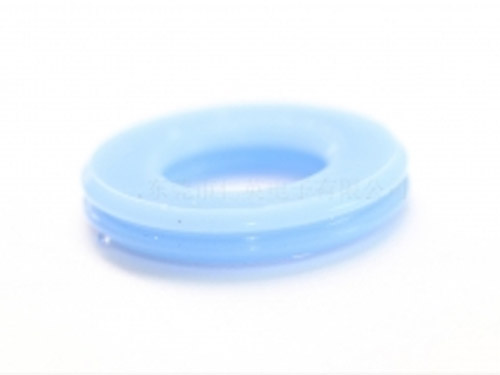(1) Nitrile rubber.
Nitrile rubber is a copolymer obtained by polymerizing butadiene and acrylonitrile in a suspension. It is resistant to mineral base oils, hydrocarbons, and water resistance. The content increases and increases. For occasions that require good oil resistance, it is advisable to use high acrylonitrile content butyronitrile-40; low temperature conditions should use medium acrylonitrile content butyronitrile-26. Nitrile rubber is not saturated with polar rubber, so it is insoluble in non-polar mineral oil or animal and vegetable oil, but it has poor light resistance and is vulnerable to ozone.
The grades of nitrile rubber are: Nitrile-18, Nitrile-26, Nitrile-40. Nitrile rubber has excellent resistance to fuel oil and aromatic solvents, and is mainly used for sealing occasions that contact animal fats, gasoline, general oils and other oils. The operating temperature of the new nitrile rubber is -40~150℃, and the temperature of the old nitrile rubber is -20~100℃.

(2) Fluorine rubber.
Fluorine rubber grades are F-23-11, F-26-41, F-246, etc., fluorine rubber has the advantages of high temperature resistance, oil resistance, chemical corrosion resistance, etc., safe temperature -20~180℃, can be used in benzene, gasoline, hot oil, concentrated sulfuric acid, concentrated nitric acid, caustic soda and other media. It can be used to manufacture cylinder liner seals, rubber bowls and rotating lip seals, which can significantly increase the sealing time.
(3) Silicone rubber. It is synthesized from organic silicon and hydrocarbons, has good temperature resistance, is non-toxic and tasteless, and is suitable for oils, concentrated phosphoric acid, concentrated acetic acid, sodium hydroxide, ammonia, ethanol, etc. Operating temperature -70~260℃. Since silicone rubber is not resistant to oil, has low mechanical strength, and is expensive, it is not suitable to make oil-resistant sealing products.
(4) Ethylene-propylene rubber. It is synthesized from ethylene and propylene. It is particularly resistant to phosphate ester hydraulic oil, ketones, alcohol solutions and acids and alkalis, and at the same time resistant to high-pressure water vapor. However, it has a large expansion coefficient in mineral oil and diester lubricants, so it cannot be used in these media. Used in. Its temperature resistance is 40~150℃.
(5) Chlorohydrin rubber. Chlorohydrin rubber is a rubber that appeared in the 1960s. It has excellent oil resistance and radiation resistance. It is mainly used for freon and mineral oil, and its service temperature is -20~130℃.


